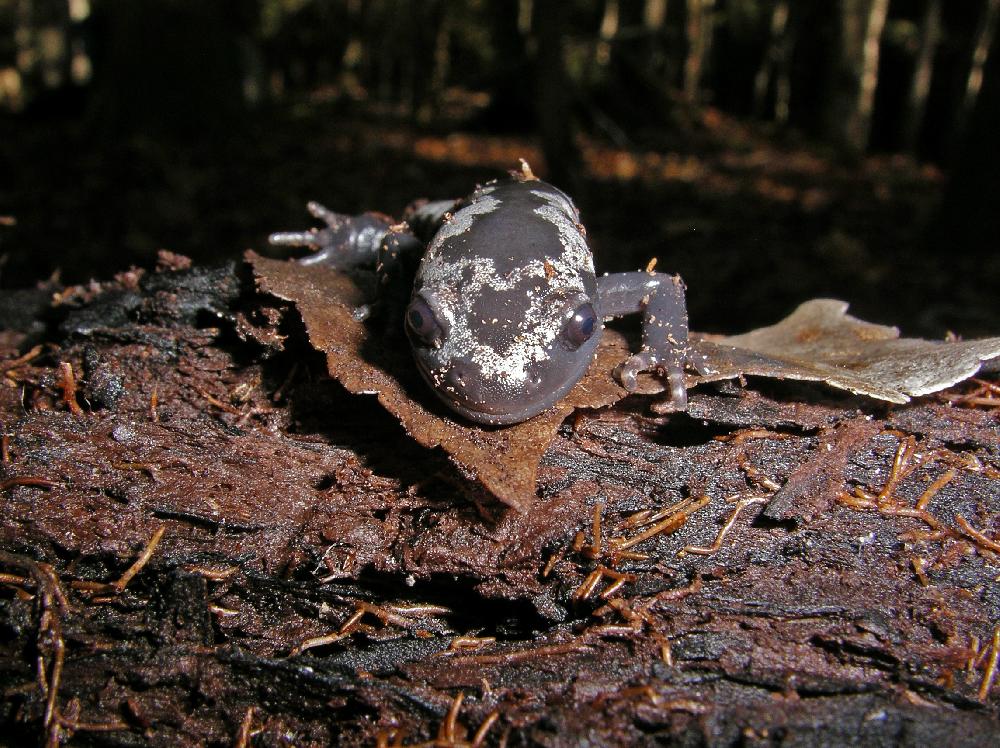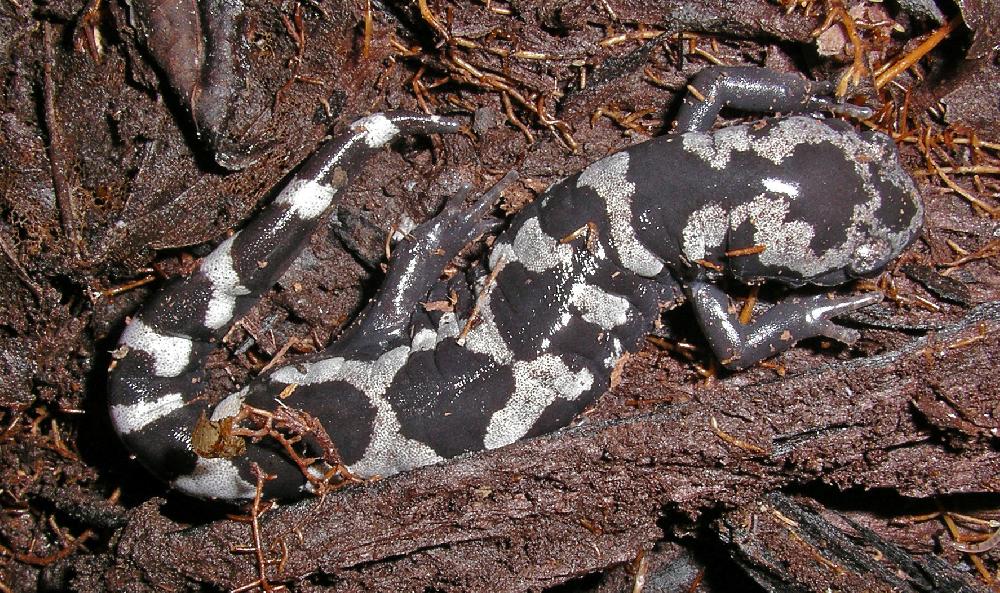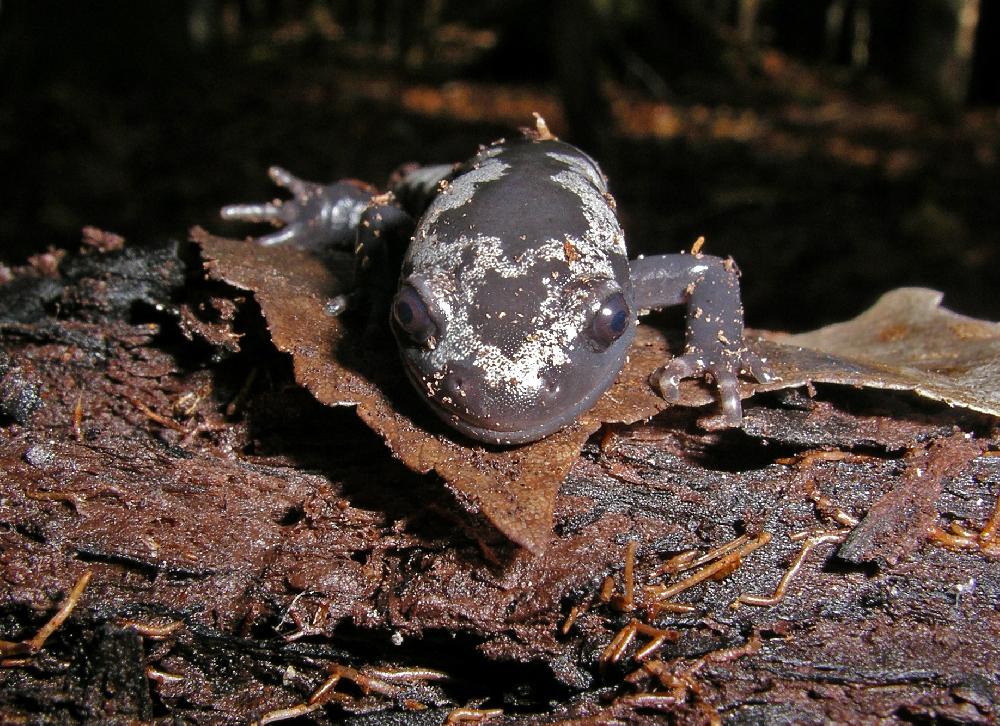The Marbled salamander is a nonpermanently aquatic salamander, which means that it lives both in and near water and above and below ground. It can be found at elevations below 2,300 feet (700 m) in the park.
Adults grow to 3-5 inches (80-120 mm) and are stout bodied. Their dorsum has large white blotches extending from head to tail on a black matrix. Its belly is black.
Ambystoma opacum breeds in dry ponds. Breeding ponds are limited within the Park, being concentrated in Cades Cove and nearby Big Spring Cove (the four Finley-Cane sinkhole ponds), the Cane Creek drainage, and at scattered localities between Sugarlands and Cades Cove along the Little River (at the Sinks and ditches along the road to Tremont). These locations are all on the Tennessee side of the Park.
On the North Carolina side of the Park beaver ponds are found in Bone Valley and Big Cove, along with small scattered ditches and wetlands occurring in the Cataloochee Valley, but no pond salamanders are known to breed in them.
The life cycle of semi-aquatic salamanders takes place in and near water, as well as, above and below ground. Surface activity is only a small part of their life cycle. Most species probably have a small ground surface home range beneath debris and litter. They spend a significant part of their lives underground. As young juveniles, they may remain nearly entirely underground. As adults, they may spend long intervals on the surface feeding and guarding territory.
Species occasionally become arboreal during the night or under rainy conditions; often finding shelter under loose bark. Cold, heat, and drought generally keep salamanders under cover, conversely heavy rains and high humidity tend to bring them to the surface. They often leave cover when the soil is moist or at night, when they forage.
Marbled as well as other mole salamanders may live 10-15 or more years.
References:
Dodd, C. Kenneth. 2004. The Amphibians of Great Smoky Mountains National Park. The University of Tennessee Press, Knoxville, Tennessee.
Tilley, S. G., Huheey, J. E., 2001. Reptiles and Amphibians of the Smokies. Great Smoky Mountains Association. Gatlinburg, Tennessee.



